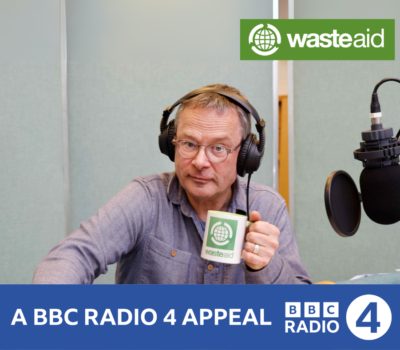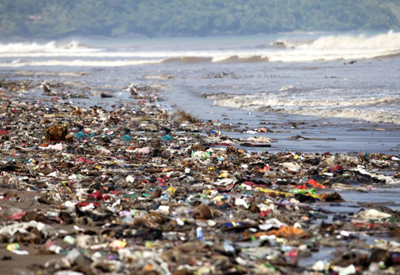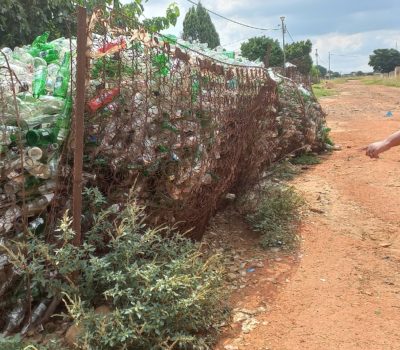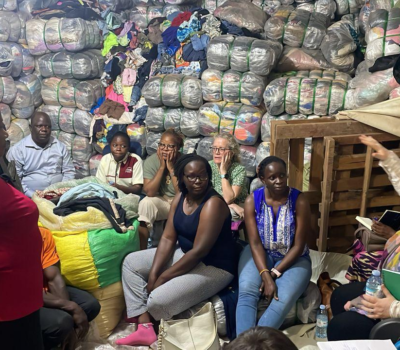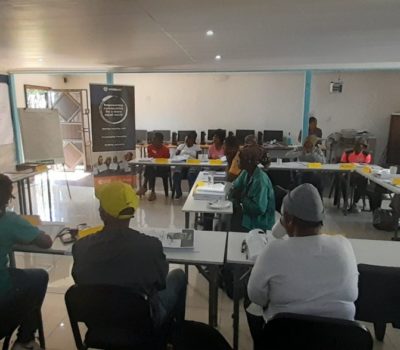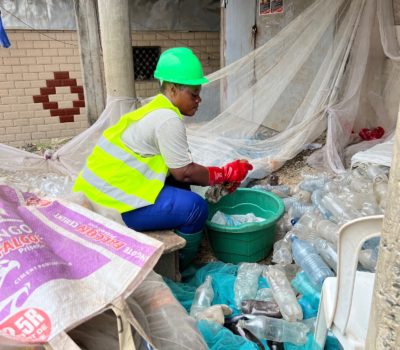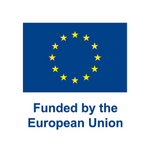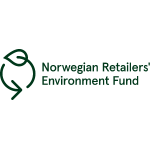Waste, Climate and Finance
Thought Pieces
Author: Admin
Published: 17 September 2021
Zoë Lenkiewicz, Senior Technical Advisor and Head of Communications for WasteAid, shares the organisation’s perspective on waste, climate and finance.
In the “race to net zero”, the global waste management movement has a lot of work on its hands. While the focus on UK emissions is on iterative improvements, the elephant in the room is still the billions of people who lack a waste collection service and burn their waste in their backyards or at dumpsites.
The UK government says, “We cannot afford to wait to act against the threat of climate change. We must work together to protect our planet and people and ensure a greener, more resilient future for us all”. Surely this means an urgent move to deliver waste management services to the 1 in 3 people who have no alternative than dumping or burning.
Estimated to be causing twice the emissions of aviation, the commonplace practice of open burning is a public health travesty as much as a climate one. Mixed waste contains hydrocarbons, heavy metals, and other hazardous compounds that are released into the atmosphere on a regular basis by households across the globe. Children play and walk to school in clouds of fumes and soot known to cause cancers, and reproductive and developmental diseases.
Waste management systems have been proven to be excellent value for money, in terms of protecting public health (waste collection was introduced in the UK under the first Public Health Act in 1875), reducing flood risk from blocked drains, and improved economic opportunity. Thus far however, waste management has failed to attract anything like the amount of climate finance that is invested in decarbonising aviation, and which arguably benefits only a tiny percentage of the global population.
Attracting climate finance to waste management
Under the Paris Agreement of 2015, countries are required to carry out every five years, a process known colloquially as the ‘ratchet mechanism’. Countries must submit Intended Nationally Determined Contributions (NDCs) to reduce greenhouse gas emissions compared to a ‘business as usual’ scenario. Under the framework of the Paris Agreement, each country is expected to submit enhanced NDCs every five years, to ratchet up ambition to mitigate climate change.
Since the Paris Agreement was signed in 2015, the conference of 2020 was set to be the first iteration of the ratchet mechanism.
For countries to properly include waste management in their NDCs, they require a reasonable and internationally agreed approach to estimating current emissions, as well as avoided emissions as a result of improved systems. Determining emissions from backyard burning and dumpsite fires is no simple task, but without it, progress will stall.
WasteAid has been collaborating with partners including the International Solid Waste Association, the Royal Academy of Engineers’ Safer End of Life programme, and the UN’s Climate Change and Clean Air Coalition in an attempt to put waste on the agenda at COP.
Policymakers in lower- and middle-income countries are all too aware of the health impacts of burning waste, and the increased risk of flooding and cholera caused by blocked drains. With COP27 taking place in Africa, it is hoped that waste management will finally feature on the agenda.
How WasteAid is making an impact through its projects
Most of WasteAid’s activities contribute towards the reduction of climate emissions from poorly managed waste. Whether that’s increasing recycling in Cameroon, reducing food waste in The Gambia or supporting circular economy entrepreneurs in India, South Africa and Vietnam with seed funding and business mentoring.
As open burning remains a default approach to waste disposal in lower- and middle-income countries, any activity that diverts waste from disposal can avoid climate change emissions by reducing the amount of “waste” that requires disposal, providing safe alternative routes for resource management, and displacing demand raw material extraction.
Programmes managed by WasteAid also build climate resilience by removing waste from drains where it contributes to flash floods and associated water-borne and mosquito-borne diseases, and regenerating natural systems by returning organic matter to agricultural land.
What WasteAid and partners are advocating for at COP26 and beyond
Short-term goals:
- Poor waste management is recognised by global decision makers as a significant source of greenhouse gas emissions and barrier to climate resilience.
- Governments in lower- and middle-income countries recognise that waste management is a cost-effective and achievable way to reduce climate emissions.
- Global decision makers to agree to an internationally agreed standard for estimating the climate impact of poorly managed waste in lower- and middle-income countries.
- A circular economy approach and its positive contribution to preventing climate change is recognised by policy makers and supported through funding decisions.
Mid-term goals:
- Lower- and middle-income countries include sustainable waste management in their Nationally Determined Contributions.
- Climate finance is directed towards waste management in lower- and middle-income countries.
Long-term goals:
- Funding and policy focus leads to improved sustainable waste management in lower- and middle-income countries.
- Improved sustainable waste management reduces climate emissions and builds climate resilience.

